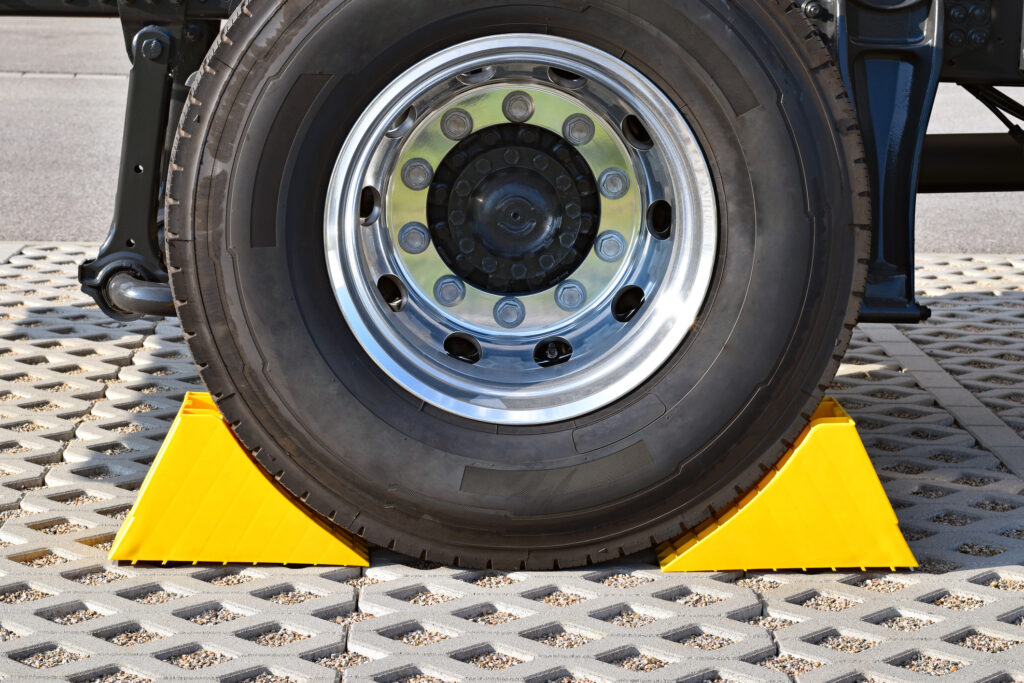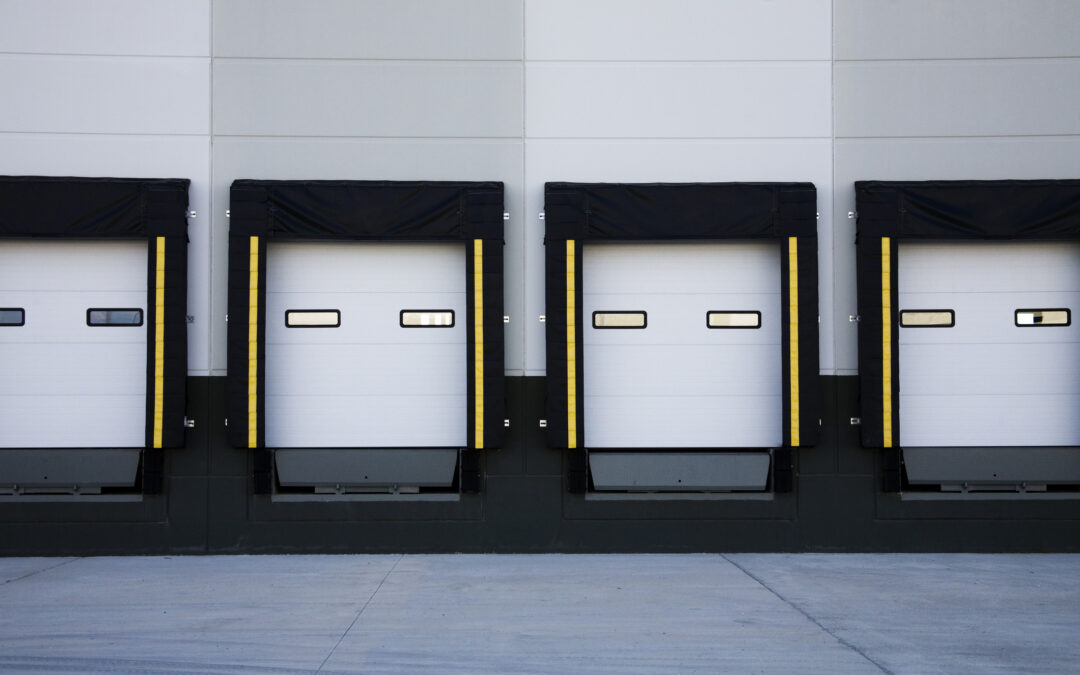5 Types of Loading Docks & Which Is Best for Your Business
As a cornerstone of modern logistics, loading docks play a crucial role in the seamless movement of goods. Let’s dive into the diverse world of loading docks, exploring their types, functionalities, and how they can transform your operations within the GTA and beyond.
View Begley’s Complete Loading Dock Solutions
What Is a Loading Dock?
Loading docks serve as the critical link between the transportation of goods and their storage or distribution from warehouses. These platforms are essential for efficient, safe, and timely handling of merchandise. Their design and functionality directly impact the operational flow, making them a vital component of supply chain management.
What Are the Different Parts of a Loading Dock?
Loading docks consist of several key components, each playing a vital role in ensuring efficient, safe, and seamless loading and unloading processes. Understanding the different parts of a loading dock can help you appreciate how they come together to facilitate the smooth operation of logistics and supply chain activities. Let’s break down these components:

Dock Leveler
A dock leveler bridges the gap between the dock and the truck, compensating for height differences to ensure a smooth transition for moving goods. They can be mechanical, hydraulic, or air-powered, each offering varying levels of efficiency and durability. The choice of dock leveler depends on the volume of traffic, the types of goods being handled, and the budget constraints of the operation.
Discover Dock Leveler Solutions
Dock Seal and Shelter
Dock seals and shelters are designed to create a tight seal between the dock and the truck, enhancing energy efficiency and protecting goods from the elements. Seals are made of compressible materials that form a snug barrier around the edges of the dock opening, while shelters enclose the space around the top and sides of a truck, accommodating a wider range of truck sizes and providing better access for loading and unloading.
Discover Dock Seals and Shelters
Dock Bumpers
Dock bumpers absorb the impact when a truck backs into the dock, protecting both the building and the vehicle from damage. They can be made from rubber, steel, or laminated materials, and their durability and impact resistance are crucial for maintaining the integrity of the loading dock over time.
Vehicle Restraint Systems
Vehicle restraint systems, such as wheel chocks or automated restraints, secure the truck to the dock, preventing it from prematurely departing or shifting during loading and unloading. This safety feature is essential for preventing accidents and ensuring the safety of personnel working in the loading dock area.
Discover Vehicle Restraint Solution
Dock Lighting
Proper lighting is essential for safety and efficiency, especially during early morning hours or late at night. Dock lights illuminate the dock area and the interiors of trailers, helping workers see clearly and avoid accidents while moving goods.
Dock Doors
Dock doors seal off the loading dock when not in use, contributing to security and energy efficiency. They can vary in design, from roll-up doors to sectional overhead doors, and are often insulated to maintain temperature control within the facility.
What Are the Different Types of Loading Docks?
Understanding the variety of loading docks available can help you select the right one for your business needs. Each type is designed to address specific logistical challenges, enhancing efficiency, safety, and accessibility.
1. Flush Docks
Flush loading docks represent the standard in loading dock design, aligning perfectly with the building to create a smooth transition from truck to warehouse. This design simplicity facilitates straightforward loading and unloading processes, minimizing the risk of damage to goods and equipment. Flush docks are versatile, accommodating a wide range of vehicles and cargo types, making them ideal for businesses with diverse logistical needs.
Perfect For:
- High-volume shipping and receiving operations
- Diverse industries, from manufacturing to retail
- Businesses seeking straightforward, efficient dock operations
When it comes to what is the most common loading dock, the answer is the flush dock. Their reliability and ease of use make them a popular choice across various industries, which is why this loading dock type is a great option for many businesses.
2. Enclosed Docks
Enclosed docks offer a fully sheltered loading and unloading environment, integrating the dock inside the building. This design provides superior protection against adverse weather conditions and enhances security for high-value goods. The controlled environment reduces the risk of product damage and improves worker comfort and safety. Enclosed docks are particularly beneficial for operations sensitive to temperature and those requiring an additional layer of security for their logistics.
Perfect For:
- Operations in regions with extreme weather conditions
- Handling sensitive or high-value cargo
- Businesses prioritizing product security and quality control
Overall, enclosed docks are a top pick when it comes to protecting cargo and personnel from external elements.
3. Sawtooth Docks
Sawtooth docks, characterized by their angled docking bays, are ingeniously designed to maximize space efficiency and improve vehicle maneuverability. This configuration allows trucks to back into docks at an angle, reducing the required turnaround space and enabling easier navigation for drivers. Sawtooth docks are especially useful for facilities with limited space or those needing to manage a high volume of incoming and outgoing shipments simultaneously.
Perfect For:
- Facilities with spatial constraints
- High-traffic logistics centers
- Operations needing to optimize dock space and traffic flow
Their innovative design facilitates smoother operations in challenging spaces, proving that smart planning can significantly impact how the efficiency of your logistics process.
4. Depressed or Declining Loading Docks
Declining loading docks have a slope that lets trucks line up with the dock easily, even on hills or uneven ground. This setup is great for places where flat docks don’t work well. It helps make loading and unloading safer and quicker, and it’s good for any business dealing with trucks of different sizes.
Perfect For:
- Places with uneven land or slopes.
- Businesses that need to work with many kinds of trucks.
Declining docks offer a tailored approach to loading challenges, ensuring seamless operations regardless of the terrain.
5. Open Loading Docks
Open loading docks are unenclosed platforms that extend from the warehouse, offering direct access for trucks without the barrier of a building wall or door. Unlike flush docks, which have a main door and are integrated into the structure for a seamless transition, open docks are exposed to the outside, making them easily accessible for staff but vulnerable to the elements and theft. While their openness provides flexibility, it requires strategic planning to ensure goods are protected.
Perfect For:
- Operations needing quick, easy access to trucks.
- Facilities in regions with consistently mild weather conditions.
- Businesses looking for a flexible, straightforward loading solution.
Open docks stand out for their adaptability and ease of access, but their lack of security often makes them a challenging choice for most businesses.
Choosing the Right Type of Loading Dock for Your Business
Making the right choice in loading dock design is pivotal for enhancing your logistical operations. Here’s a more detailed look at factors to consider:
- Business Size and Volume: Assess the scale of your operations and the volume of goods being moved. Larger enterprises or those with high throughput may benefit from a mix of dock types to handle different needs and increase efficiency.
- Cargo Type and Sensitivity: Consider the nature of the goods you’re handling. Are they fragile, temperature-sensitive, or high-value? Enclosed docks might be your best bet for added protection and security.
- Frequency of Use: Evaluate how often your docks will be in use. High-traffic operations require durable, efficient solutions that can withstand the rigours of constant activity.
- Space and Layout Constraints: The physical space of your facility can greatly influence your choice. Sawtooth docks could be the solution for limited spaces, whereas flush docks might be preferred for straightforward, high-capacity loading areas.
- Budget and Long-Term Needs: Finally, consider your budget and future requirements. Investing in the right type of dock from the start can save money and disruption in the long run.
For top-quality loading dock solutions, reach out to Begley Overhead Doors & Docks Ltd. Our team of experts is ready to help you ensure you’re equipped with the best possible setup for your needs.
Explore our loading dock repair services, maintenance inspections, and more! Or contact us directly at 905-846-6000 for more details.
Achieve better logistics with Begley’s loading dock solutions today!
Selecting the right loading dock type is more than a logistical decision; it’s a strategic investment in your business’s efficiency, safety, and bottom line. By understanding the unique benefits and ideal applications of each dock type, you can make an informed choice that aligns with your operational needs and goals.
Trust Begley Overhead Doors & Docks Ltd. to provide the expertise and services you need to maximize your loading dock’s potential. Let’s elevate your logistics operations together.
Call now at 905-846-6000, or get a free quote!















